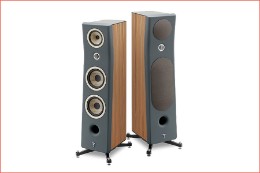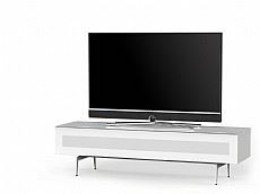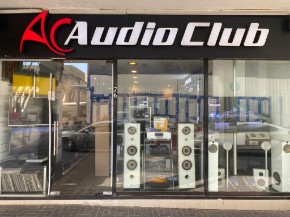Maestro Anniversary was born in AIRTECH's laboratories following to the experience gained with the development of Puccini Anniversary. The basic scheme is very similar, but with one important difference: the amplification chain is fully balanced from the input to the power stage which becomes unbalanced to connect to the speakers. This took to a doubling of amplifier stages and attenuation. Also in the Maestro Anniversary all stages are without global feedback. The feedback is not even used on preamp stage(as in Puccini). The output power was increased to 150W on 8Ω with the consequent adjustment of all the driver and power stages that now use four pairs of transistors per channel. The basic configuration remains inverted cascode that is comparable to a single gain stage followed by the output buffer. The stability of the working point is maintained through a DC Servo that begins to work only at frequencies below a few tenths of Hertz (then totally out of the audio band). Thanks to a so refined circuitry, along with the selection of components of the highest level (military standard resistors, polypropylene audiograde capacitors custom made for AIRTECH, internal wiring with 7N OCC copper and pure copper output connectors) helped to create an amplifier that has the honor of being the heir of the glorious Maestro Integrated and therefore fully joins the Anniversary line celebrating at the same time, the first 20 years of Audio Analogue, but also 15 years by the introduction of AUDIO ANALOGUE's first product to bear the Maestro name. The new Maestro Anniversary is a unique amplifier, its remarkable power that always doubles with decreasing impedance and its extraordinary driving skills, are accompanied by a unique musicality and refinement not common for so “muscular” amps. Unfortunately it is not easy to express in words all its peculiarities and therefore we invite you to listen to it as soon as possible and can only confirm that now more than ever MUSICA MAESTRO!!!
Technical description
The amplifier is fully thought of as composed of three separate elements. 1. Power. It 'made with a 600VA transformer for each channel. The rectifier bridge is realized with discrete diodes ultrafast 50A each. The filtering capacity is 16800μF by branch so the amplifier has a total filter of 67200μF. At the switching on, the inrush current is limited by resistors variable with the temperatures that after the powering are excluded from the signal path. 2. Amplifier. There are two amplifiers (right channel and left channel) totally separated each another both as ground, as power supply stages connections. They have no common link. Even the digital commands for the control of volume chip are optically isolated. It's real a dual mono configuration. The copper footprints of the PCB have a double thickness compared to the standard to ensure the passage of large currents involved. The routing of the PCB has long been studied to optimize the signal paths and maintain the symmetry of the stages. 3. Preamplifier. Just like the power amp circuits also preamplifiers are dual mono. Immediately behind the input connectors there are relays for the channels switching followed by a discrete components buffer, to isolate the amplifier from the source. The maximum acceptable input voltage is approximately of 6VRMS. The buffers, both balanced as for the inputs as for the outputs, ranging for driving in class A the four(for each channel) volume chips. The latter, as in the case of the Puccini are simply strings of resistors without any operational inside them. This choice was made to not have any kind of global feedback within the Maestro. After the volume control stage we have the real preamp that amplifies up to about 12dB. The three elements described above are physically housed on three separate boards so it's like having a power supply, a preamplifier and a separate power amp.
Technical features
- Channels 2
- Colours 2
- RCA inputs 3
- XLR inputs 2
- Input impedance 47KOhm
- Maximum input signal 6Vrms
- Power on 8Ω load 150W @ 1% THD + N
- Power on 4Ω load 300W @ 1% THD + N
- Power on 2Ω load 500W @ 1% THD + N
- Sensitivity(8Ω output nominal power) 720Rrms
- Frequency Response(Att. 0dB, -3dB band) 90KHz
- Output resistance(2Ω nominal power and 1kHz) 0.2Ohm
- Input Noise(Band limits 0Hz-80kHz/A-weighted) =20µV/=10µV
- SNR =100 dB
- Standby power consumption(230VAC) 0.7W
- Dimensions(HxWxD) 168x450x550 mm
- Weight 31 Kg






















